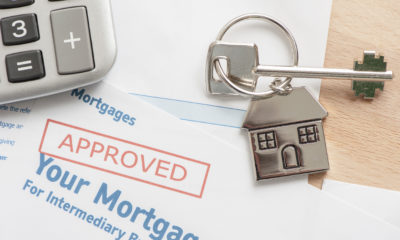(Special) – Christmas, spring break, winter and summer vacations and other holidays during the year may be great times to relax and escape from work and everyday routines, but they also can be opportunities to overspend your budget and build up debt.
Reports show that as interest rates rise many Canadians are finding themselves in precarious financial shape.
Household debt in Canada currently is very high with Canadians owing $178 for each $100 of household income, and a majority of Canadians (52 per cent) say they are living paycheque to paycheque.
A recent survey for insolvency company MNP Ltd. has found that 46 per cent of Canadians are just $200 away from financial insolvency while a recent report from the Office of the Superintendent of Bankruptcy found that the number of consumers seeking debt relief has increased by about five per cent over the last year.
“The debt ratio and the number of consumer debt proposals and bankruptcies are up over last year and we’ve actually seen an increase in them in January of this year, mostly the result of a lack of budgeting and the recent increases in interest rates,” Doug Jones, president of BDO Canada Ltd. said in an interview. “While it’s cold outside and a winter get-a-way may be tempting, people need to take a long look at what they are doing and not automatically put it on their credit card and add to their debt. It can end up costing a lot more than just the mere cost of the vacation. ”
Jones says that more than three-quarters of Canadians are carrying debt of some kind. Fifty-nine per cent have credit card debt, 31 per have a car loan and 39 per cent are carrying a mortgage.
Even seniors are going into their retirement with debt, and in many cases, little or no savings.
A survey by Sun Life last year found that 22 per cent of Canadian retirees are carrying an average of $10,000 or more in non-mortgage debt. One in five are still making mortgage payments, 66 per cent have unpaid credit cards, 26 per cent are making car payments, seven per cent have unpaid health expenses and owe money on holiday expenses or vacation property, and six per cent have unpaid home renovations.
Jones suggests people set their goals and be specific about what they’re saving for — the vacation, car or retirement.
Once you set a budget, take any excess and start paying off your debt. Distinguish between good and bad debt and start paying off the bad debt first.
Good debt includes anything that is too expensive to pay cash for but is something you need or might be considered a good investment, such as a house, which usually rises in value over time.
Bad debt is any form of debt with a high interest rate for things you don’t really need or can’t afford. The worst form of bad debt is credit card debt because it carries the highest interest rate.
One strategy is to pay off debt with the highest interest first and then pay off the lower-interest debt. Another is to consolidate all your debt together at the lowest rate possible and start paying it off — even if it’s a little each time.
“People’s perception that they can simply use credit cards to fund all of their wants really needs to change,” Jones says. “Canadians should address their need for proper budgeting and for greater financial responsibility.”
Talbot Boggs is a Toronto-based business communications professional who has worked with national news organizations, magazines and corporations in the finance, retail, manufacturing and other industrial sectors.
Copyright 2019 Talbot Boggs
Talbot Boggs , The Canadian Press

 Buying a Home5 years ago
Buying a Home5 years ago
 Credit6 years ago
Credit6 years ago
 5 Mortgage Secrets6 years ago
5 Mortgage Secrets6 years ago
 Business4 years ago
Business4 years ago
 Buying a Home6 years ago
Buying a Home6 years ago
 5 Mortgage Secrets6 years ago
5 Mortgage Secrets6 years ago
 Business4 years ago
Business4 years ago
 Buying a Home6 years ago
Buying a Home6 years ago






